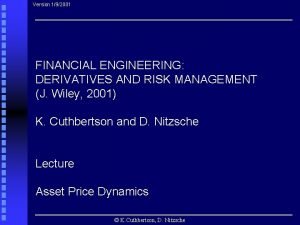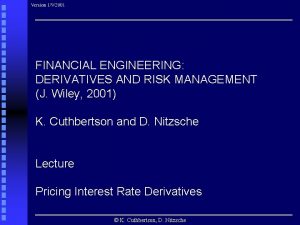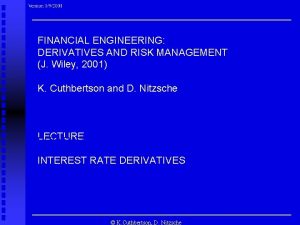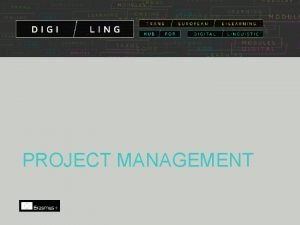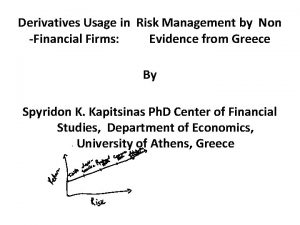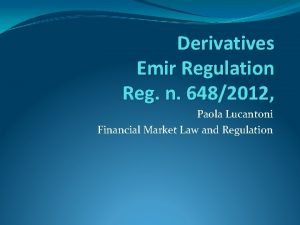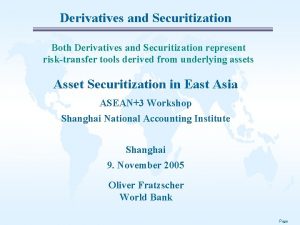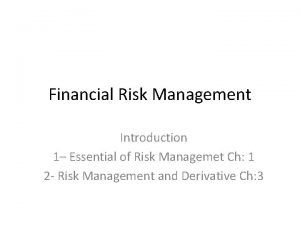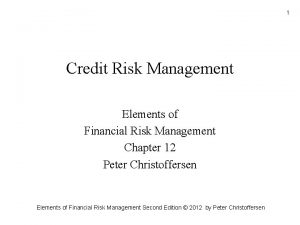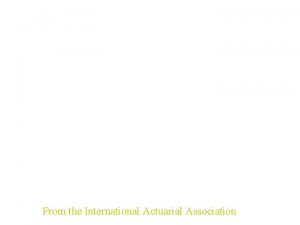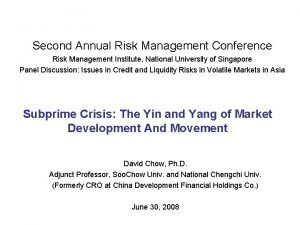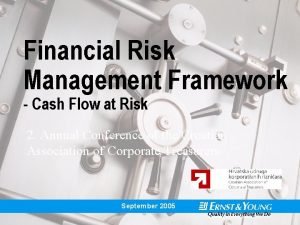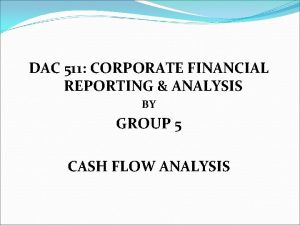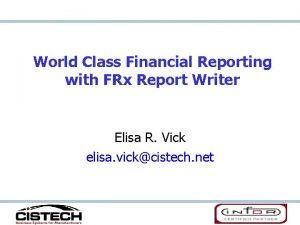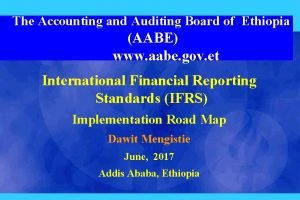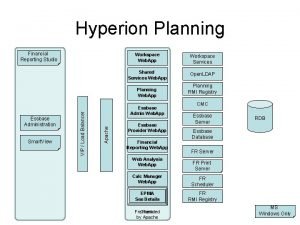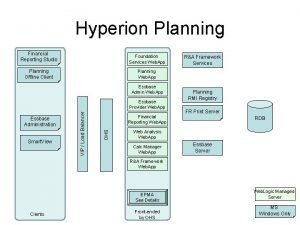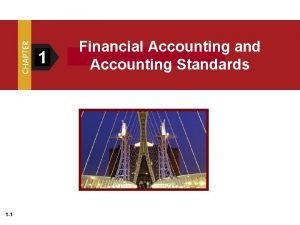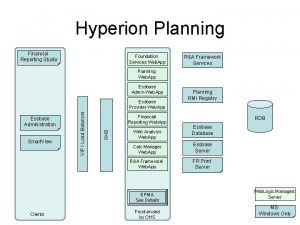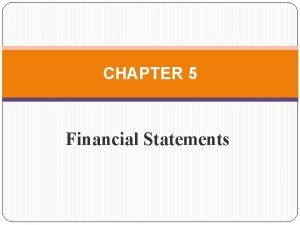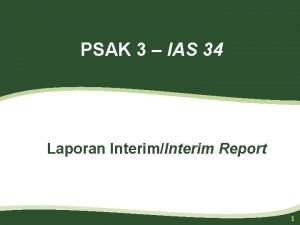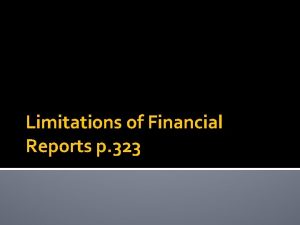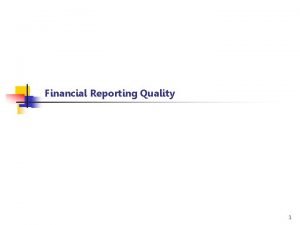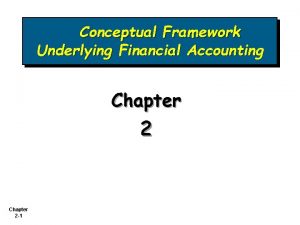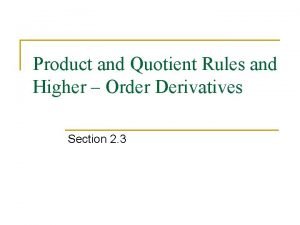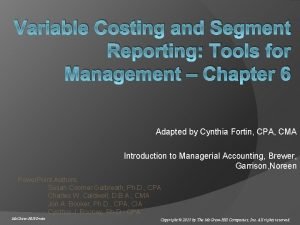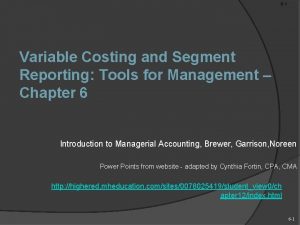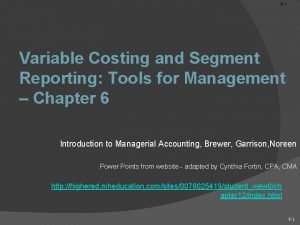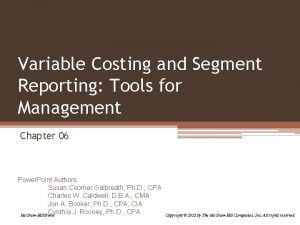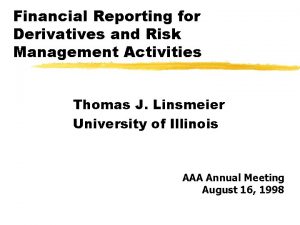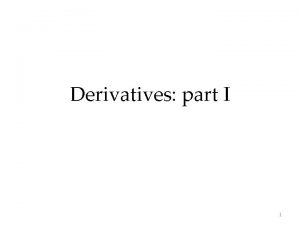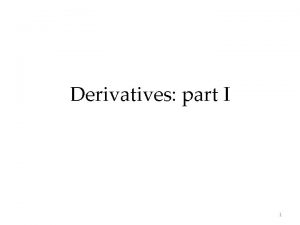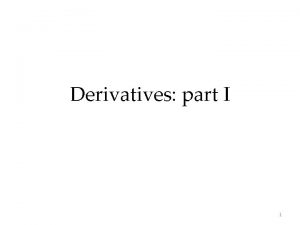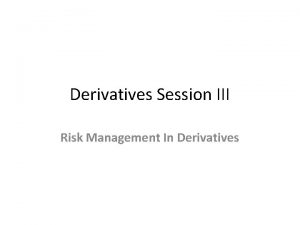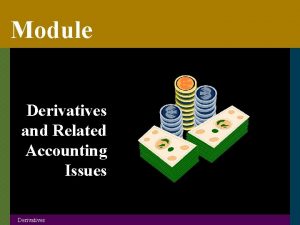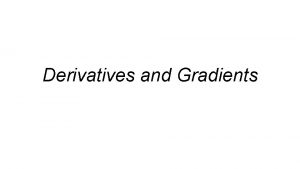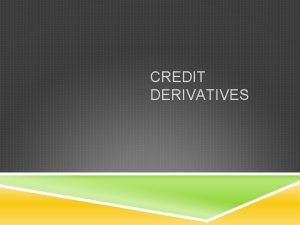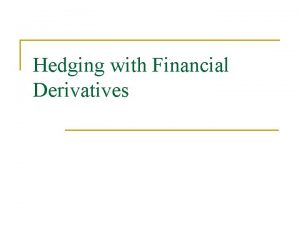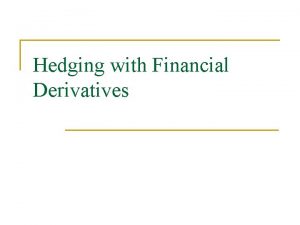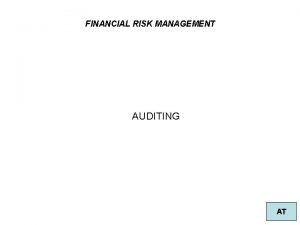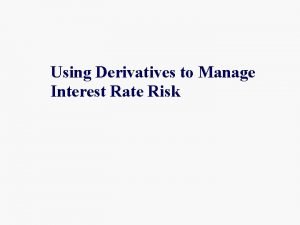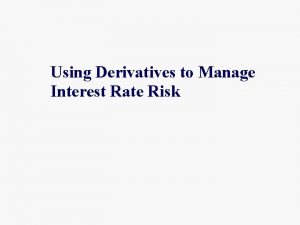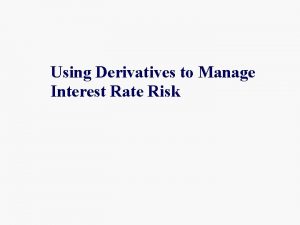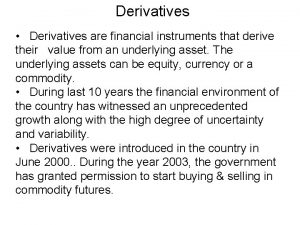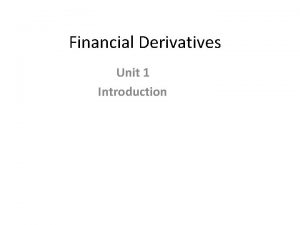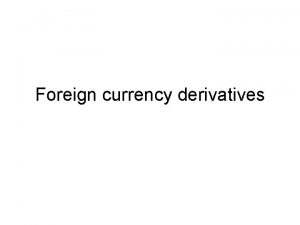Financial Reporting for Derivatives and Risk Management Activities























































































- Slides: 87

Financial Reporting for Derivatives and Risk Management Activities Thomas J. Linsmeier University of Illinois AAA Annual Meeting August 16, 1998

Workshop Topics z. Common types of derivatives z. Risk management activities z. New financial reporting standards y. FASB Statement 133 y. SEC Financial Reporting Release 48 x. Attend session at 10: 30 a. m. tomorrow z. Illustrative examples z. Evaluation of Statement 133 2

What Are Derivatives? z“Derivatives”-A generic term used to describe a wide variety of financial and commodity instruments whose value depends on or is derived from the value of an underlying asset/liability, reference rate, or index. 3

Common Derivatives z. Forwards / Futures z. Options z. Swaps z. Hybrids / Embedded derivatives 4

Forward / Future Contracts Obligate one party to buy and another party to sell an underlying instrument or commodity at a future date Future Date Now Instrument or Commodity Cash Market Forward Market Long Short Cash Market Price Instrument or Commodity Agree to Terms Long Short Forward Price 5

Options z Options provide the holder the right, but not the obligation, to buy or sell the underlying instrument or commodity at a predetermined price called the “strike” or “exercise” price z Options normally are in the form of a “Call” or a “Put” y. Calls - enable the holder to buy the underlying instrument or commodity at the strike price y. Puts - enable the holder to sell the underlying instrument or commodity at the strike price z Require “up-front” payment or “premium” 6

Payoff Profiles of Purchased Puts and Calls Payoff Purchased Call Exercise Price of underlying instrument Payoff Purchased Put Exercise Price of underlying instrument 7

Swaps z. Two parties exchange recurring payments z. Similar to series of forward contracts z. Interest-rate swaps most common 8

“Plain-Vanilla” Interest Rate Swap Floating Rate (LIBOR) X Notional Principal Fixed-Rate Receiver Fixed-Rate Payer Fixed Rate of 6. 75% X Notional Principal Note: LIBOR is London Interbank Offered Rate 9

Importance of Forwards, Futures, Swaps, and Options z. Instruments that involve the exchange of cash flows z. Can be used to alter existing cash flows z. Comprise the basic risk management tools 10

Hybrid Instruments: Embedded Derivatives z. Simple derivatives are the fundamental building blocks of these complex structures z. Structured note: Note with embedded option or swap z. Complex swap: “Plain vanilla” swap with embedded options or leverage features 11

Managing Risks with Derivatives z. Low cost, ease, and speed of transacting make derivatives attractive for managing risk z. Different derivatives provide means of adjusting the timing, amount, and variability of cash flows / fair values z. Ideal for both hedging and speculation 12

How Are Derivatives Used? z. Risk management (hedging) y. Commodity price risk y. Interest rate risk y. Foreign currency price risk z. Speculation 13

Commodity Price Risk z. Cost of mining gold: $350 per pounce z. Current gold spot price: $400 per ounce z. Gold reserves sufficient for ten years of production z. Company exposed to risk of decreases in future prices of gold z. Cash flow exposure yforecasted transaction 14

Original Exposure Profit e l d i s tia p U ten po 50 sk i e. R id s n w o D Loss 350 Gold Production Cost 400 Gold price 15

Risk Management Tool: Short Forward Profit 0 Loss 400 Current forward price Gold price 16

Net Position: $50 Profit “Locked in” Profit Net Position 50 e r u s o 350 p O ri l a n gi Ex 400 Sh Gold price or t F or wa rd Loss 17

Interest Rate Risk z. Company issued a $100 million floating rate note with interest payments based on LIBOR z. Interest expense: LIBOR X $100 Million z. LIBOR currently is 7% z. Company exposed to risk of increases in LIBOR z. Cash flow exposure yexisting liability 18

Exposure at Each Interest Payment Date of e sk eas i R cr in Interest Expense $7 Million (. 07 x $100. million) it al en ase t Po cre de 0 7% LIBOR 19

Risk Management Tool: Interest Rate Swap Company with Exposure Receive Floating Rate (LIBOR) X Notional Principal Bank or Other Intermediary Fixed-Rate Receiver Fixed-Rate Payer Pay 7. 00% Fixed Rate X Notional Principal 20

Risk Management Tool: Interest Rate Swap Pay Fixed Rate of 7%, Receive LIBOR m ro sf w flo ut O Net $7 Million (. 07 x $100 Million) Outflow on Swap ap Sw 0 7% s= w flo ap ut Sw e. O m iv ro at s f eg w N flo In Net LIBOR 21

Net Position at Each Interest Payment Date se n e l xp a n i t. E g i Or teres In Net Interest Expense $7 Million Ou Sw tflow ap sf r om 0 7% Ne g In ativ flo e ws Ou tf f ro l m ows = Sw ap 22

Reducing Funding Costs With Derivatives z. Swapping floating-rate cash flows to fixedrate reduces funding costs only if rates increase z. Swapping fixed-rate cash flows to floatingrate reduces funding costs if rates decrease z. Funding costs reduced by “expressing a view” (i. e. , by betting on movements in future interest rates) 23

Foreign Currency Price Risk z US Company commits to purchase machinery from a French manufacturer z Payment of 10 million French francs (FF) to be made six months from now z Currently $US/FF exchange rate $. 20 per FF z US Company is exposed to risk of increases in the $US price of a FF z Fair value exposure yfirm commitment 24

Original Exposure Cost (in $US) st o SC U $ sed a k Ris of re c n I $2 Million ($. 20/FF x FF 10 Million) 0 . 20 $US Price of a FF Current Exchange Rate 25

Risk Management Tool: Purchased Call Option Payoff in $US . 25 Exercise price $US price of a FF Strategic Issues: z Company believes the price of a FF may go down z Company does not want to pay more than $2. 5 million for 26 machinery.

Net Cost of Machinery Cost (in $US) r u s po g ori e x e l na i NET COST $2. 5 million $2 million 0 . 25 $US price of a FF np ayo ff Op tio Option payoff functions as a reduction in cost 27

Speculation with Derivatives z Speculation primarily domain of dealers and sophisticated traders z Speculative trading based on investors’ views of future market movements z Using interest rate swaps to reduce funding costs also requires “expressing a view” (i. e. form of speculation) z Query: Is risk management much different from speculation? 28

Speculating with Derivatives z A manufacturing company anticipates that a certain commodity will soon drop in price. z To exploit this belief, the company sells the commodity forward (or future) delivery at a price reflecting the current market consensus z If the price does decline, the company can buy the commodity in the spot market and deliver it against the forward contract z Profit = Forward price - spot price 29

FASB Statement 133* “Accounting for Derivative Instruments and Hedging Activities” * Portions of the FASB's, "A Review of Statement 133 -Accounting for Derivative Instruments and Hedging Activities, " copyright 1998 by the Financial Accounting Standards Board, Norwalk, Connecticut 06856, are included by permission. 30

Statement 133: Why The Change? z. Quantity and variety of derivatives is increasing z. Accounting conventions and standards are outdated, incomplete, and inconsistent z. The resulting financial statements are not transparent 31

Four Cornerstone Decisions of Statement 133 z Derivatives are contracts that create rights and obligations that meet the definition of assets and liabilities z Fair value is the only relevant measure for derivatives z Only assets & liabilities should be on balance sheet z Special hedge accounting should be provided, but should be limited to transactions involving offsetting changes in fair values or cash flows for the risk being hedged 32

Statement 133: Key Aspects z. All derivatives are at fair value on the balance sheet z. Special accounting for the change in value of derivatives designated and qualifying in: y. Fair value hedges y. Cash flow (forecasted transaction) hedges y. Foreign currency hedges 33

Why Allow Hedge Accounting? z. To resolve recognition and measurement anomalies z. These anomalies cause earnings effects in different periods for hedging instrument and hedged item 34

Common Reporting Issues: Qualifying Hedges z. Documentation requirements z. Effectiveness and ineffectiveness z. General disclosure requirements z. Specific accounting and disclosure rules yfair value, cash flow, foreign currency hedges z. Hedge termination z. Impairment 35

Documentation Requirements (Paragraphs 20(a), 28(a)) Formal documentation is required at the inception of the hedge and must include: y. Identification of the hedging instrument and the hedged item y. The nature of the risk being hedged y. The risk management objective/strategy y. How effectiveness will be assessed 36

Required Documentation - Example of Cash Flow Hedge of Note Purchase z On 1/1/x 1, XYZ purchases a call option on 5 year treasury notes as a hedging instrument in a cash flow hedge of a forecasted $100 million 5 -year treasury note purchase at 12/31/x 1 z XYZ designates the decreases in cash flows related to decreasing interest rates as the hedged risk z For effectiveness measurement, the call premium is excluded from the test. The call option notional amount and forecasted note amount match. 37

Effectiveness (Paragraphs 20 and 28) z Effectiveness is defined as the derivative instrument’s ability to generate offsetting changes in the fair value or cash flows of the hedged item. Key aspects: y. For both fair value and cash flow hedges, the hedge is expected to be highly effective y. Effectiveness is measured at inception and must be assessed whenever earnings are reported (at least quarterly) y. Effectiveness measures intended to be similar to “high correlation” in Statement 80 38

Example of Highly Effective Fair Value Hedge 6/30/x 1 12/31/x 1 39

Hedge Effectiveness Test z. An item may be excluded from the effectiveness test because it does not provide offsetting cash flows, such as an option’s time value (time value is the amount paid for the option, excluding payments for intrinsic value) z. An item may be included in the effectiveness test, but may generate ineffectiveness 40

Effectiveness Implications z If the highly effectiveness test is failed, the entire hedge does not qualify for special accounting z If the highly effectiveness test is met, some ineffectiveness may occur and a portion of the derivative gain or loss may be recorded through earnings z Ineffectiveness is recorded differently in cash flow and fair value hedges, depending on the hedging relationship 41

Ineffectiveness (Paragraphs 22 and 30) Items included in the effectiveness test that may generate ineffectiveness include: y. Different value of hedged item and notional principal y. Different maturity or repricing dates y. Different underlying interest rate basis e. g. LIBOR versus Prime y. Currency differences y. Credit differences 42

General Disclosure Requirements (Paragraph 44) For all derivative instruments that qualify as hedging instruments, the entity shall disclose for each type of hedge the: y. Objectives for holding derivatives y. Context needed to understand those objectives y. Strategies for achieving those objectives y. Entity’s risk management policy y. Description of the items or transactions that are being hedged. 43

Accounting for Fair Value Hedges (Paragraphs 20 -27) A fair value hedge is a hedge of the exposure to a change in fair value of a recognized asset or liability or of an unrecognized firm commitment attributable to a particular risk. Key aspects: y. Assets or liabilities exposed to price risk y. Change in value of hedged item and hedging instrument recorded in earnings y. Result is matching for effective hedge y. Effective gain or loss adjusts basis of hedged item 44

Board Views - Fair Value Hedges z. Fair value hedging is reasonable because the hedged item is a firm commitment or an asset or a liability z. Offsetting fair value changes of the hedged item and the hedging instrument through earnings provides a natural offset 45

Disclosure Requirements: Fair Value Hedges (Paragraph 45(a)) z Net gain or loss recognized in earnings during the reporting period representing: yhedge ineffectiveness ythe component of the derivatives gain or loss excluded from the assessment of hedge effectiveness ywhere the net gain or loss is reported z The amount of net gain or loss is recognized in earnings when a hedged firm commitment no longer qualifies as a fair value hedge. 46

Accounting for Cash Flow Hedges (Paragraphs 28 -35) A cash flow hedge is a hedging relationship where the variability of the hedged item’s cash flows is offset by the cash flows of the hedging instrument. Key Aspects: y. Forecasted transactions or balance sheet items with variable cash flows qualify y. Effective gain or loss to OCI y. Earnings recognition matches hedged item y. Ineffective gain or loss may be recorded in earnings 47

Board Views - Cash Flow Hedges z. Board decided to permit cash flow hedge accounting as an accommodation to constituents z. Because the hedged forecasted transaction is not recorded on the books, derivative gains and losses are deferred in other comprehensive income (OCI), adding a layer of complexity 48

Board Views - Cash Flow Hedges (continued) z. Gains and losses on derivative contracts do not represent future economic sacrifices (liabilities) or benefits (assets) z. Deferring gains or losses on derivatives as a separate component of OCI, rather than as a separate asset or liability, avoids conceptual difficulties and increases visibility for cash flow hedge transactions 49

Disclosure Requirements: Cash Flow Hedges (Paragraph 45(b)) z Net gain or loss recognized in earnings during the reporting period z Description of transactions or other events that will result in reclassification of gains and losses deferred in accumulated OCI into earnings within next 12 months z Maximum length of time entity is hedging forecasted transaction variable cash flows z Discontinued hedge gains and losses because it is probable forecasted transaction will not occur 50

Accounting for Currency Hedges (Paragraphs 36 -42) Board intended to increase the consistency of hedge accounting guidance by broadening the scope of eligible foreign currency hedges. Key aspects: y. Cash flow and fair value hedges permitted y. Carry forward most of the ideas in Statement 52 x. Hedge of net investment in sub x. Use of nonderivative instrument y. Some expansion of hedge accounting particularly forecasted transactions 51

Accounting for Hedge Termination (Paragraph 25) Terminate hedge accounting prospectively when: yeligibility of qualification criteria not met yderivative expires, is sold, terminated or exercised yhedge designation is removed 52

Impairment Issues (Paragraph 27) z. Hedged item is still subject to impairment reviews z. Apply after basis of hedged item is adjusted for changes in fair value or cash flows z. Fair value of hedging instrument is not considered 53

Implementation Issues z. What qualifies as a derivative instrument, including embedded derivatives? y. See Paragraphs 6 -16, Appendix A, Section 1, and Appendix E z. What qualifies as a hedged item? y. See Paragraphs 21 and 29 and Appendix C 54

Implementation Issues (continued) z. Assessment of hedge effectiveness y. See Appendix A, Section 2 z. Transition provisions y. See Paragraphs 48 -56 and Appendix B, Section 3 55

Illustrative Examples z. Fair value hedge z. Cash flow hedge z. Appendix B, Section 1 56

Definition of a Fair Value Hedge A fair value hedge is a hedge of the exposure to a change in fair value of a recognized asset or liability or of an unrecognized firm commitment attributable to a particular risk. 6/30/x 1 12/31/x 1 57

DEFINITION OF FAIR VALUE Fair value is defined as the amount at which an asset (or liability) can be bought (or incurred) or sold (or settled) in a current transaction between willing parties, other than in a forced or liquidation sale. y. Quoted market prices are the best indicator. y. In the absence of quoted prices, use other valuation techniques. 58

DEFINITION OF A RECOGNIZED ASSET OR LIABILITY z. A recognized asset or liability is defined as an asset or liability recorded on the balance sheet (i. e. , not a future transaction or an unrecorded intangible asset). z. Hedgeable assets or liabilities include: y Available-for-sale securities y Commodity-type inventory y Fixed-rate loan obligations 59

DEFINITION OF A FIRM COMMITMENT z. A firm commitment has the characteristics of an asset or liability and must be: x. Specific as to price, quantity, and timing x. With an unrelated party, binding on both parties and usually legally enforceable x. Probable due to significant disincentive for nonperformance z. Example: Agreement with an unrelated party to purchase five machines (a fixed quantity) for $500 per machine (a fixed price) in six months (fixed timing) 60

Fair Value Hedge Accounting Key concepts: z Derivatives are always recorded on the balance sheet at fair value. z The change in a derivative’s fair value is always recognized in earnings. z Offsetting gains/losses on hedged items are recognized in earnings and adjust the carrying amount of those items. 61

STATEMENT 133 CRITERIA: Hedgeable Items Changes in fair value of the following items can be hedged: z Financial assets or liabilities (four specific risks can be hedged) z Non-financial assets or liabilities (the only risk that can be hedged is the risk of changes in fair value of the entire hedged asset or liability) Note: Assets or liabilities already measured at fair value through earnings, such as trading securities, cannot be hedged items. 62

STATEMENT 133 CRITERIA: Risks That Can Be Hedged z For financial assets or liabilities, the hedged risk can be the risk of changes in fair value : y. Of the entire hedged item y. Due to market interest rates y. Due to foreign currency exchange rates y. Due to an obligor’s creditworthiness z Note: Prepayment risk cannot be the hedged risk. (However, the option component of a prepayable instrument can be designated as the hedged item. ) 63

STATEMENT 133 CRITERIA: Items Not Qualifying For Hedge Accounting Transactions not affecting earnings do not qualify for hedge accounting, such as: z Projected purchases of treasury stock z Intercompany transactions (except foreign currency) z Anticipated stock issuances in relation to a stock option plan for which no compensation expense is recognized for changes in stock price 64

STATEMENT 133 CRITERIA: Items Not Qualifying For Hedge Accounting (continued) z. Other exclusions: y. Equity method investments y. Minority interests in consolidated subsidiaries y. Equity investments in consolidated subsidiaries y. Firm commitments to enter into business combinations y. An equity instrument issued by the entity and recorded in stockholders equity 65

Example: Fair Value Hedge of Firm Commitment z XYZ manufactures titanium products. Its titanium supplier requires a 6 -month firm commitment. On 1/1/x 1, XYZ enters into a firm commitment with its supplier to buy 10, 000 units of titanium at the current forward rate of $310 per unit on 6/30/x 1. z XYZ wants to purchase and record the titanium at whatever the market price will be on 6/30/x 1. Therefore, on 1/1/x 1, XYZ enters into a forward contract to sell 10, 000 units of titanium at the current forward rate of $310 per unit. z Hedge effectiveness is based on changes in the 6/30/x 1 forward price of titanium. 66

Example: Fair Value Hedge of Firm Commitment $128, 709 = (310 - 297) * 10, 000, present valued at 6% for 3 months $250, 000 = (310 - 285) * 10, 000 67

Example: Fair Value Hedge of Firm Commitment Journal entries at 3/31/x 1: Forward contract Gain on forward contract 128, 079 To record change in fair value of forward contract Loss on firm commitment Firm commitment 128, 079 To record change in fair value of firm commitment 68

Example: Fair Value Hedge of Firm Commitment Journal entries at 6/30/x 1: Forward contract Gain on forward contract 121, 921 To record change in fair value of forward contract Loss on firm commitment Firm commitment 121, 921 To record change in fair value of firm commitment ($121, 921 = $250, 000 less $128, 079) 69

Example: Fair Value Hedge of Firm Commitment Journal entries at June 30 (con’t): Cash 250, 000 Forward contract 250, 000 To record cash receipt upon settlement of forward contract 70

Example: Fair Value Hedge of Firm Commitment Journal entries at June 30 (con’t): Titanium 3, 100, 000 Cash 3, 100, 000 To record purchase of titanium at contracted rate Firm Commitment Titanium 250, 000 To derecognize the firm commitment and adjust the carrying amount of the titanium purchase 71

Cash Flow Hedge A cash flow hedge is a hedging relationship where the variability of the hedged item’s cash flows are offset by the cash flows of the hedging instrument. 72

Statement 133 Criteria: Hedgeable Items Cash flow hedge provisions allow an entity to designate a derivative instrument as a hedge of the exposure to variability attributable to specific risks in the cash flows of: y. A recognized asset or liability such as a variable-rate bond y. A forecasted transaction such as an anticipated issuance of a fixed-rate debt 73

Statement 133 Criteria: Financial Asset and Financial Liability Hedgeable Risks For forecasted purchase or sale of a financial asset or liability, hedgeable cash flow risks include: y. Changes in the cash flows relating to the purchase or sale of the entire asset or liability y. Changes in market interest rates y. Changes in the obligor’s creditworthiness 74

STATEMENT 133 CRITERIA: Eligible Forecasted Transaction The eligible forecasted transaction must be: z A single transaction or a group of individual transactions z Probable to occur z With a third party external to the reporting entity and present an exposure to variations in cash flows for the hedged risk that could affect reported earnings 75

STATEMENT 133 CRITERIA: Ineligible Forecasted Transaction The following items do not qualify for hedging: z Items subject to remeasurement with changes in value attributable to the hedged risk reported currently in earnings z Interest rate risk of the forecasted purchase or sale of a held-to-maturity security z Forecasted business combinations subject to Opinion 16 or related to a parent company's interest in a consolidated subsidiary or an equity -method investment 76

STATEMENT 133 CRITERIA: Earnings Recognition z An entity’s risk management strategy may exclude a component of a derivative’s change in fair value y. This amount is recognized currently in earnings z Other ineffective portions of hedge may be recognized in earnings y. Is change in derivative less than change in hedged item? z Amounts in OCI shall be reclassified to earnings when the hedged item affects earnings 77

Example: Cash Flow Hedge of Forecasted Inventory Sale z ABC designated the risk being hedged as its cash flows related to a forecasted sale of 100, 000 bushels of Commodity A at the end of period 1 (the bushels originally were acquired for $1 million). z On the first day of period 1, ABC enters into Derivative Z to sell 100, 000 bushels at $1. 1 million at the end of period 1. At hedge inception, the derivative is at-themoney (i. e. , its fair value was zero). z Hedge has no ineffectiveness because all terms of the forecasted sale and the derivative match. z At the end of period 1, Derivative Z has a fair value of $25, 000 and the 100, 000 bushels of Commodity A were 78 sold for $1. 075 million.

Example: Cash Flow Hedge of Forecasted Inventory Sale Journal entries at end of period 1: Derivative Z 25, 000 OCI 25, 000 To record Derivative Z at fair value Cash 25, 000 Derivative Z 25, 000 To record settlement of Derivative Z 79

Example: Cash Flow Hedge of Forecasted Inventory Sale Journal entries at end of period 1: Cash 1, 075, 000 Revenue 1, 075, 000 COGS 1, 000 Inventory 1, 000 To record inventory sale OCI 25, 000 Earnings 25, 000 To reclassify amount in OCI to earnings upon inventory sale 80

Example: Cash Flow Hedge of Forecasted Inventory Sale Forecasted cash flows: Actual cash flows: Derivative Sale of inventory $1, 100, 000 $25, 000 $1, 075, 000 $1, 100, 000 Variability of cash flows is offset by derivative 81

Advanced Topics z. Accounting (1) for the ineffective portion of a hedge and (2) for fair value and cash flow hedges when swaps are the hedging instrument y. See Appendix B, Section 1 z. Accounting foreign currency risk in the net investment in a subsidiary y. See FASB Statement 52 82

Advanced Topics (continued) z. Application of the clearly and closely related criterion to determine the existence of embedded derivatives y. See Appendix B, Section 2 z. Hedging of a portfolio of similar assets or similar liabilities y. See Paragraph 21(a)(1) and Appendix C 83

Advantages of Statement 133 z. A clear improvement over existing practice z. Increases transparency of derivatives in financial statements z. Provides a complete and consistent accounting model for all types of derivatives and hedging activities z. Guidance is consistent with the Conceptual Framework 84

Disadvantages of Statement 133 z. Extremely complex standard z. For fair value hedges, hybrid nature of measurement attribute for hedged item z. Promotes risk management at transaction level z. Promotes derivatives as only hedging instrument 85

A Look to the Future z. Is hedge accounting warranted? y. Risk management also involves “taking a view”, which is similar to speculation z. Fair value all financial instruments z. Discontinuation of cash flow hedges of forecasted transactions? 86

Closing Remarks z. For electronic copies of the slides for use in classroom presentations at a college or university, please contact me at linsmeie@uiuc. edu z. Thanks for your attention! 87
 Financial engineering derivatives and risk management
Financial engineering derivatives and risk management Financial engineering derivatives and risk management
Financial engineering derivatives and risk management Financial engineering derivatives and risk management
Financial engineering derivatives and risk management Key risk indicators for vendor management
Key risk indicators for vendor management Business risk and financial risk leverage
Business risk and financial risk leverage Credit risk market risk operational risk
Credit risk market risk operational risk Project management financial reporting
Project management financial reporting Financial management chapter 8 risk and return
Financial management chapter 8 risk and return Management activities in software engineering
Management activities in software engineering Non financial derivatives
Non financial derivatives St x
St x Paola lucantoni
Paola lucantoni Securitization
Securitization Risk map
Risk map Now group these activities into indoor and outdoor
Now group these activities into indoor and outdoor Primary and support activities
Primary and support activities Tertiary activities definition
Tertiary activities definition Risk management irrelevance proposition
Risk management irrelevance proposition Elements of credit risk management
Elements of credit risk management Financial risk management course syllabus
Financial risk management course syllabus Enterprise risk management for financial institutions
Enterprise risk management for financial institutions Financial risk management conference 2018
Financial risk management conference 2018 Cash flow risk management
Cash flow risk management Direct vs indirect cash flow
Direct vs indirect cash flow The statement of cash flows helps users
The statement of cash flows helps users Risk reporting
Risk reporting Frxdesigner
Frxdesigner Accounting and audit board of ethiopia
Accounting and audit board of ethiopia Purpose of financial report
Purpose of financial report Essbase financial reporting studio
Essbase financial reporting studio Financial reporting essbase
Financial reporting essbase Second level of conceptual framework
Second level of conceptual framework The major key players on the international side are the
The major key players on the international side are the What is financial reporting studio?
What is financial reporting studio? Ethiopian government accounting
Ethiopian government accounting Cbd financial reporting framework
Cbd financial reporting framework Ias 34 interim financial reporting
Ias 34 interim financial reporting Limitations of financial reporting
Limitations of financial reporting Chapter 2 conceptual framework for financial reporting
Chapter 2 conceptual framework for financial reporting International financial reporting standards 9
International financial reporting standards 9 Limitations of financial reporting
Limitations of financial reporting Third level of conceptual framework
Third level of conceptual framework Residual risk and secondary risk pmp
Residual risk and secondary risk pmp Attributable risk
Attributable risk Attributable risk (ar)
Attributable risk (ar) Financial method of motivation
Financial method of motivation Product and quotient rules and higher order derivatives
Product and quotient rules and higher order derivatives Variable costing and segment reporting tools for management
Variable costing and segment reporting tools for management Variable costing and segment reporting tools for management
Variable costing and segment reporting tools for management Variable costing and segment reporting tools for management
Variable costing and segment reporting tools for management Absorption costing income statement
Absorption costing income statement Fspos
Fspos Typiska novell drag
Typiska novell drag Tack för att ni lyssnade bild
Tack för att ni lyssnade bild Returpilarna
Returpilarna Shingelfrisyren
Shingelfrisyren En lathund för arbete med kontinuitetshantering
En lathund för arbete med kontinuitetshantering Personalliggare bygg undantag
Personalliggare bygg undantag Vilotidsbok
Vilotidsbok Anatomi organ reproduksi
Anatomi organ reproduksi Förklara densitet för barn
Förklara densitet för barn Datorkunskap för nybörjare
Datorkunskap för nybörjare Tack för att ni lyssnade bild
Tack för att ni lyssnade bild Hur skriver man en debattartikel
Hur skriver man en debattartikel För och nackdelar med firo
För och nackdelar med firo Nyckelkompetenser för livslångt lärande
Nyckelkompetenser för livslångt lärande Påbyggnader för flakfordon
Påbyggnader för flakfordon Kraft per area
Kraft per area Svenskt ramverk för digital samverkan
Svenskt ramverk för digital samverkan Lyckans minut erik lindorm analys
Lyckans minut erik lindorm analys Presentera för publik crossboss
Presentera för publik crossboss Vad är ett minoritetsspråk
Vad är ett minoritetsspråk Vem räknas som jude
Vem räknas som jude Treserva lathund
Treserva lathund Mjälthilus
Mjälthilus Claes martinsson
Claes martinsson Cks
Cks Programskede byggprocessen
Programskede byggprocessen Mat för unga idrottare
Mat för unga idrottare Verktyg för automatisering av utbetalningar
Verktyg för automatisering av utbetalningar Rutin för avvikelsehantering
Rutin för avvikelsehantering Smärtskolan kunskap för livet
Smärtskolan kunskap för livet Ministerstyre för och nackdelar
Ministerstyre för och nackdelar Tack för att ni har lyssnat
Tack för att ni har lyssnat Referatmarkeringar
Referatmarkeringar Redogör för vad psykologi är
Redogör för vad psykologi är Borstål, egenskaper
Borstål, egenskaper Atmosfr
Atmosfr
